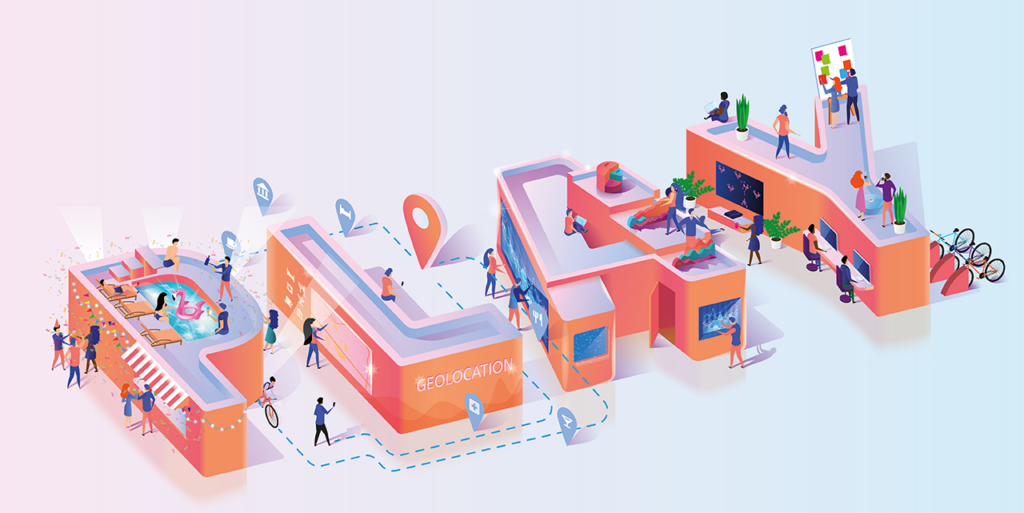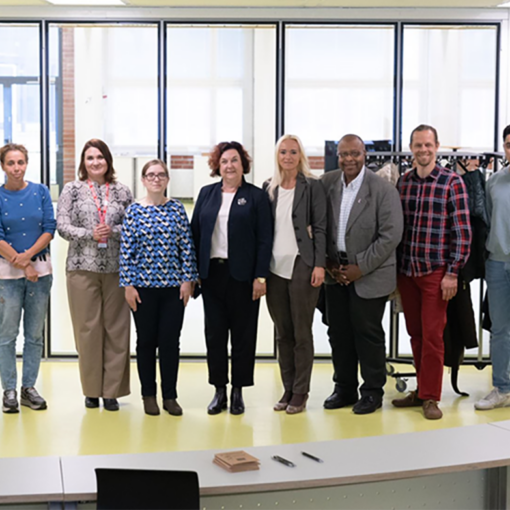Gamification and participatory budgeting were discussed at the local webinar of EmPaci‘s PBbase network at LAB University of Applied Sciences in September. Practical examples of the use of gamification in participatory budgeting were presented by Kirsi Verkka, who presented her experiences from the OmaStadi game in her presentation Gamification in Support of Equality in the Digital Participation Process. Seesam Tsokkinen also presented the participatory game made in her thesis and the experiences related to its development. Ari Hautaniemi paved the way for practical examples with the theory of gamification. The recording of the webinar can be viewed (only in Finnish) on the PBbase Network YouTube channel.
Gamification is the utilization of elements familiar from games in an environment outside of entertainment games and is intended to convey experientiality to other aspects of life as well. Gamification aims to influence motivation by increasing the attractiveness, usability and experientiality of products and services. When we talk about gamification, we mean the systematic goal of utilizing elements familiar from games. (Hautaniemi 2021.)

While the term gamification has surfaced in recent years, it’s not a new thing. Gamification dates to the early 2000s and the first attempts at gamification were made in the early 2010s in the United States. Digitalization has increased the use of gamification for new possibilities. (Hautaniemi 2021.)
Gamification should not be confused with traditional games aimed at generating entertainment value, nor with reward systems that entice people to take actions that earns points (Ruhi 2015). The various elements of gamification are e.g., score, scoreboards, levels, story or theme, achievements, challenges, feedback, progress, rewards, and clear goals. Gamification occurs in many different contexts, including education and teaching, well-being, social media, economics, exercise, consumption and engagement, inclusion, experiences, and other media. Netflix’s interactive movies, as well as smart and sports watches, are examples of gamification. (Hautaniemi 2021.)
Psychological effects of gamification
Games and their elements are built to give rewards that stimulate the brain releasing large amounts of dopamine, increasing learning, and strengthening behavior. Dopamine acts as an incentive solution in rewarding situations where a person wants more pleasurable activities. (Karimi & Nickpayamin 2017.) Gaming elements respond quickly, visually, and perceptibly to the psychological needs contained in SDT. Games offer positive experiences compared to normal life, where you don’t always get feedback, your own actions don’t always have an impact, and where you must do things from external coercion. (Hautaniemi 2021.)
Authors
Seesam Tsokkinen, Bachelor of Culture and Arts, works as project planner at LAB University of Applied Sciences in the EU Interreg funded EmPaci – Empowering Participatory Budgeting in the Baltic Sea Region -project. There are altogether 17 partners working on improving PB at EmPaci. LAB University of Applied Sciences and Tampere University are supported by Association of Finnish Municipalities.
Annukka Heinonen, Master of Business Administration, works as an RDI-specialist at LAB University of Applied Sciences, and as a project manager in the EU Interreg funded EmPaci – Empowering Participatory Budgeting in the Baltic Sea Region -project. There are altogether 17 partners working on improving PB at EmPaci. LAB University of Applied Sciences and Tampere University are supported by Association of Finnish Municipalities.

References
Hautaniemi, A. 2021. Pelillisyys ja motivaatio. Osallistuva budjetointi ja pelillisyys webinar. [Cited 1 Oct 2021]. Available at: https://www.youtube.com/watch?v=AE37LFUHGXY&t=2s
Karimi, K. & Nickpayam, J. 2017. Gamification from the Viewpoint of Motivational Theory. Italian Journal of Science & Engineering. Vol. 1 (1). 34–42. [Cited 28 Sep 2021]. Available at: https://www.researchgate.net/publication/318661654_Gamification_from_the_viewpoint_of_motivational_theory
Ruhi, U. 2015. Level Up Your Strategy: Towards a Descriptive Framework for Meaningful Enterprise Gamification. Technology Innovation Management Review. Vol. 5 (8). 5–16. [Cited 28 Sep 2021]. Available at: https://www.researchgate.net/publication/326311784_Level_Up_Your_Strategy_Towards_a_Descriptive_Framework_for_Meaningful_Enterprise_Gamification
Links
EmPaci – Empowering Participatory Budgeting in the Baltic Sea Region. 2021. Project webpage. [Cited 1 Oct 2021]. Available at: https://www.empaci.eu/
Tsokkinen, S. 2021. Kuntademokratian vahvistaminen pelillistämällä: nuorille suunnatun osallisuuspelin konseptointi. Opinnäytetyö. Teollinen muotoilu. [Cited 1 Oct 2021]. Available at: http://urn.fi/URN:NBN:fi:amk-2021052611266
SDT. 2021. Center of Self-Determination Theory. [Cited 1 Oct 2021]. Available at: https://selfdeterminationtheory.org/theory/
Videos
Hautaniemi, A., Heinonen, A., Siivari, J., Tokee, T., Tsokkinen, S. & Verkka, K. 2021. PBbase EmPaci: Osallistuva budjetointi ja pelillisyys. Video. Uploader PBbase Network. [Cited 1 Oct 2021]. Available at: https://www.youtube.com/watch?v=AE37LFUHGXY&t=2s
Images
Image 1. TeraVector. 2021. Gamification. Shutterstock. [Cited 29 Sep 2021]. Available at: https://www.shutterstock.com/fi/image-vector/gamer-play-online-social-game-typography-1331883026




